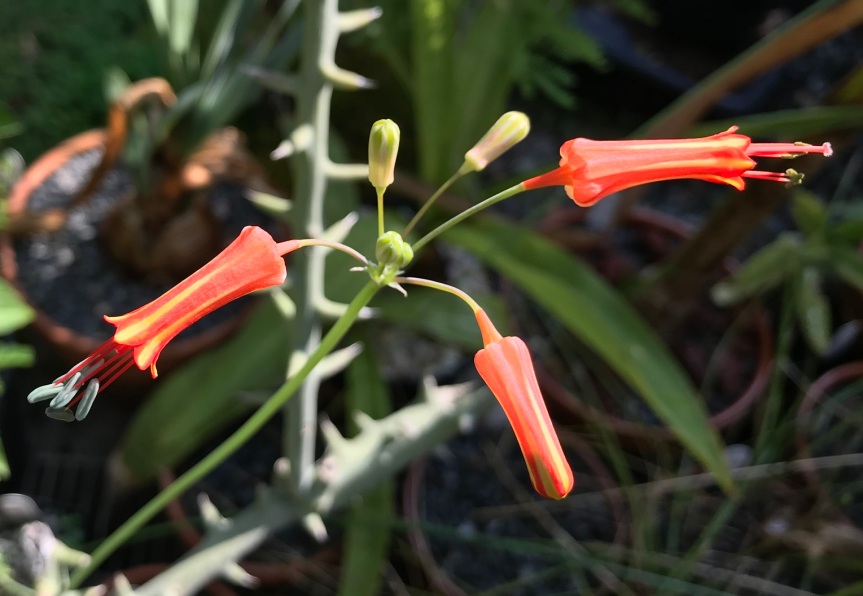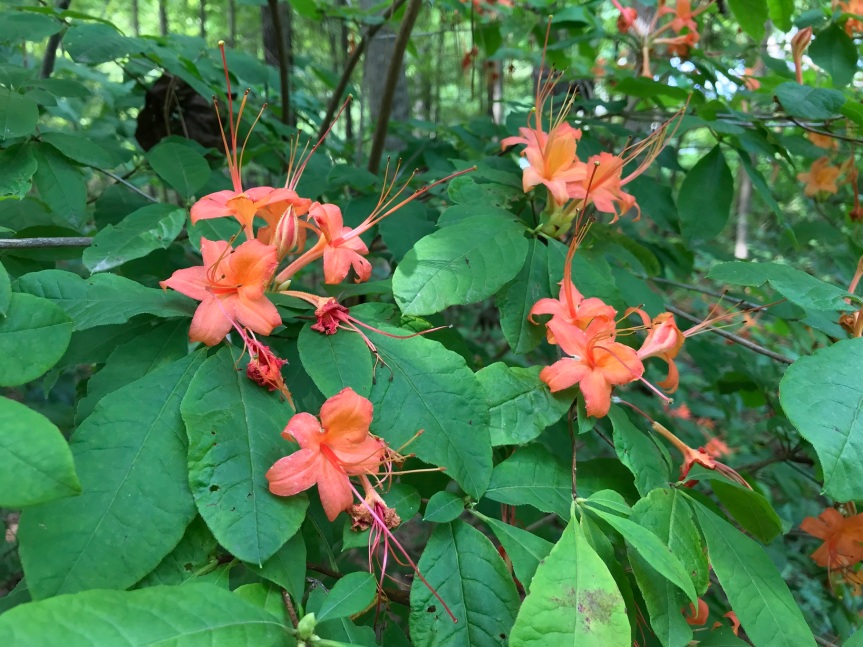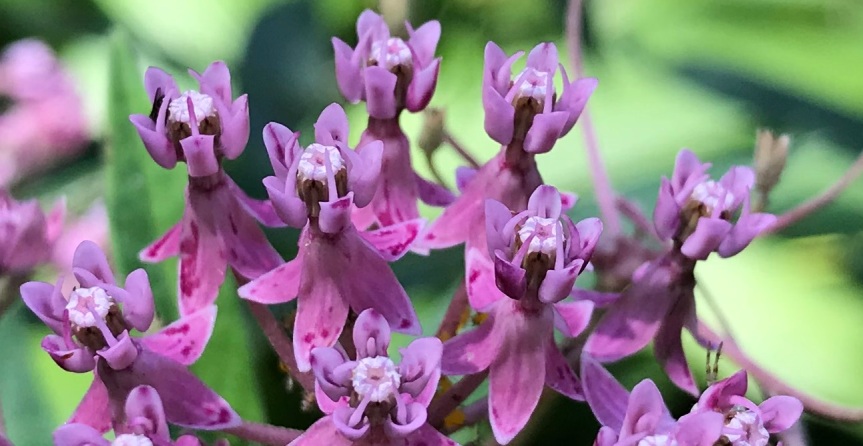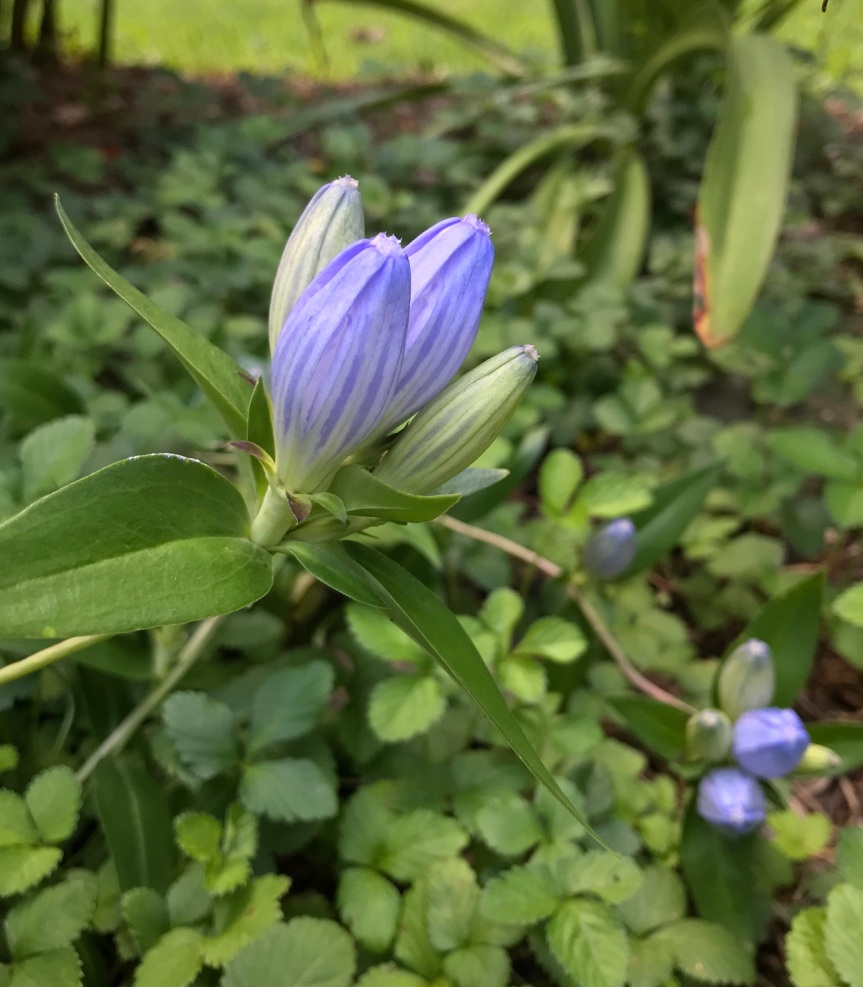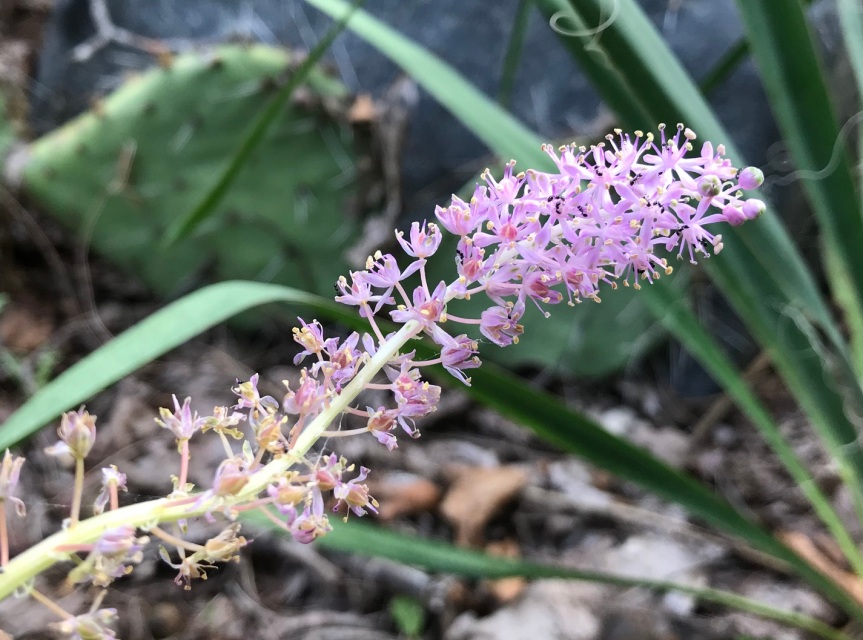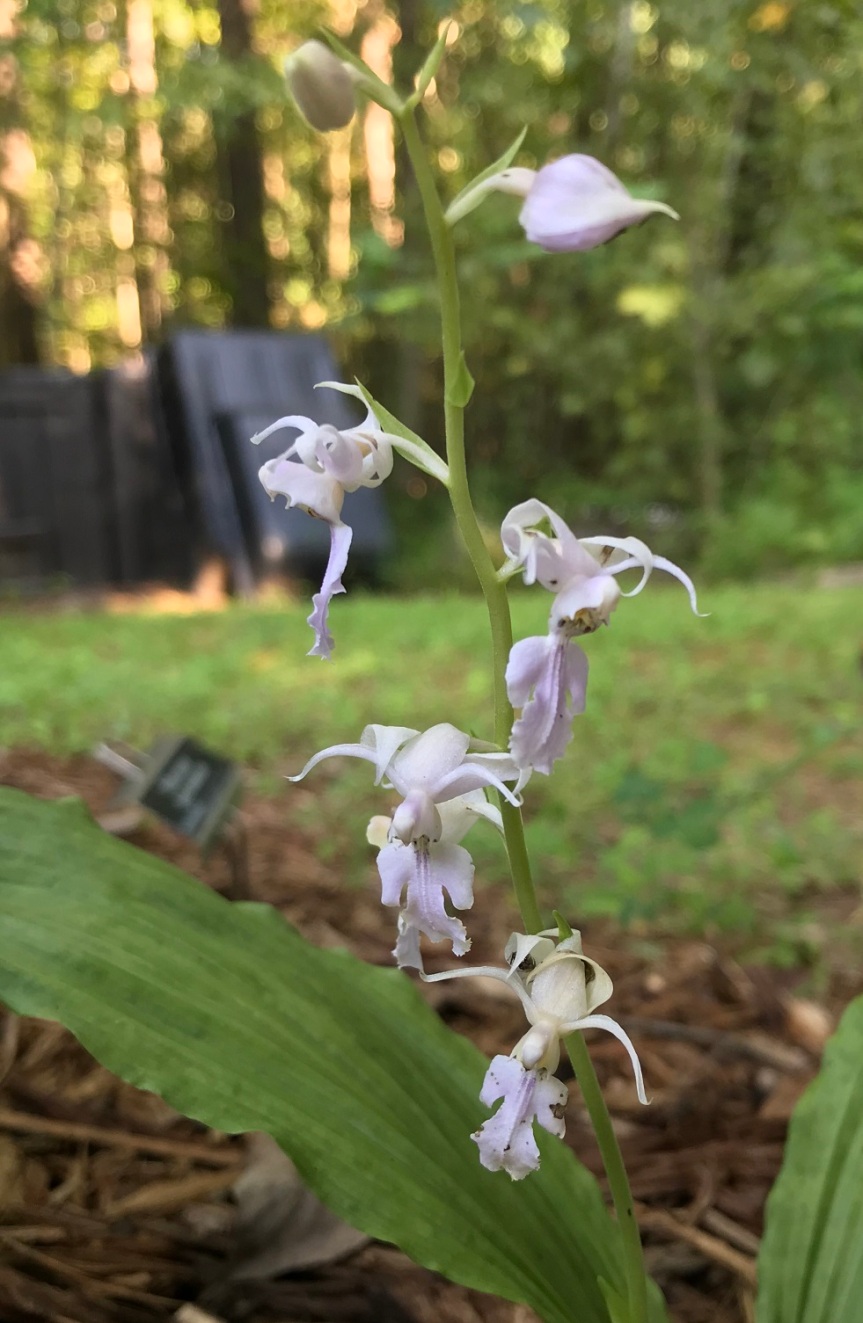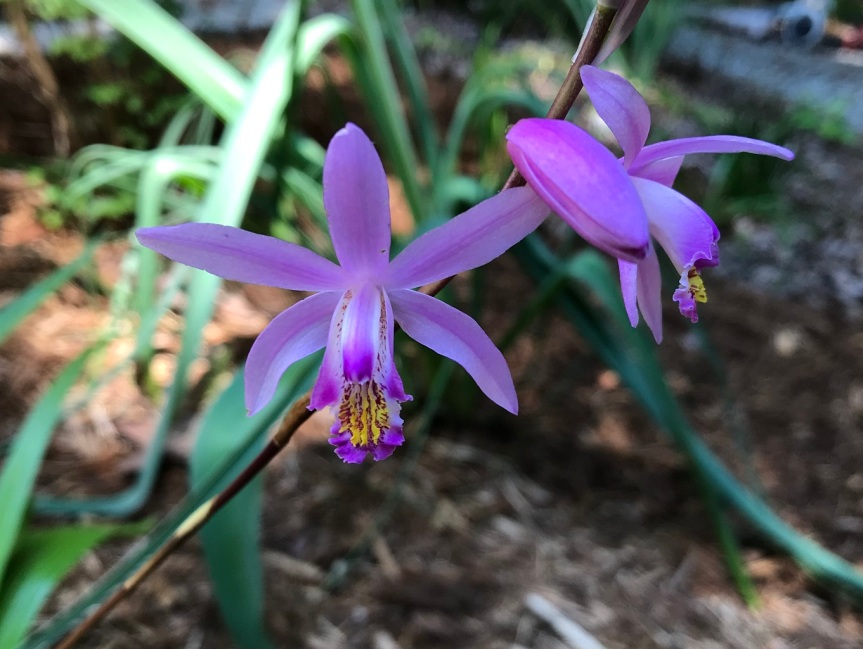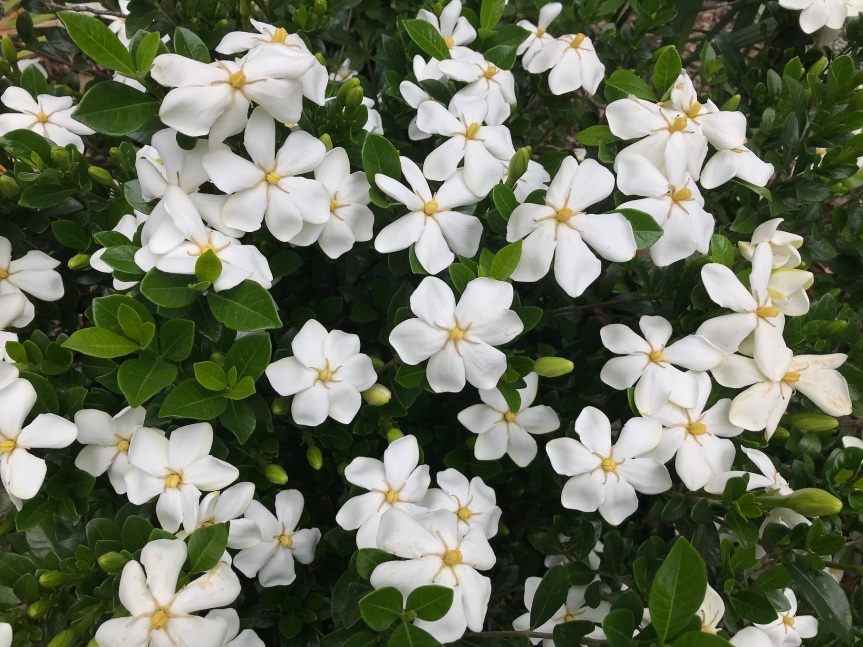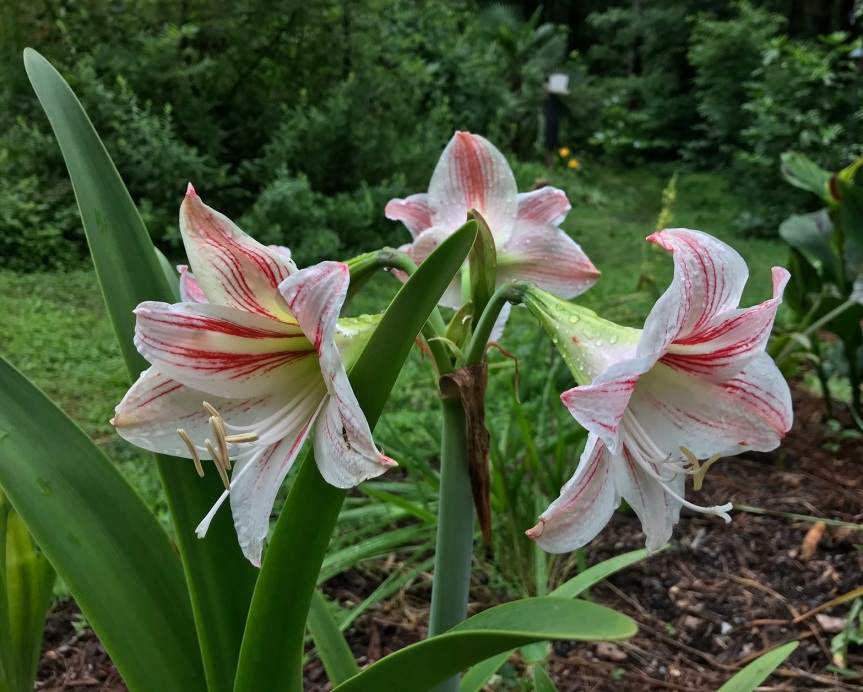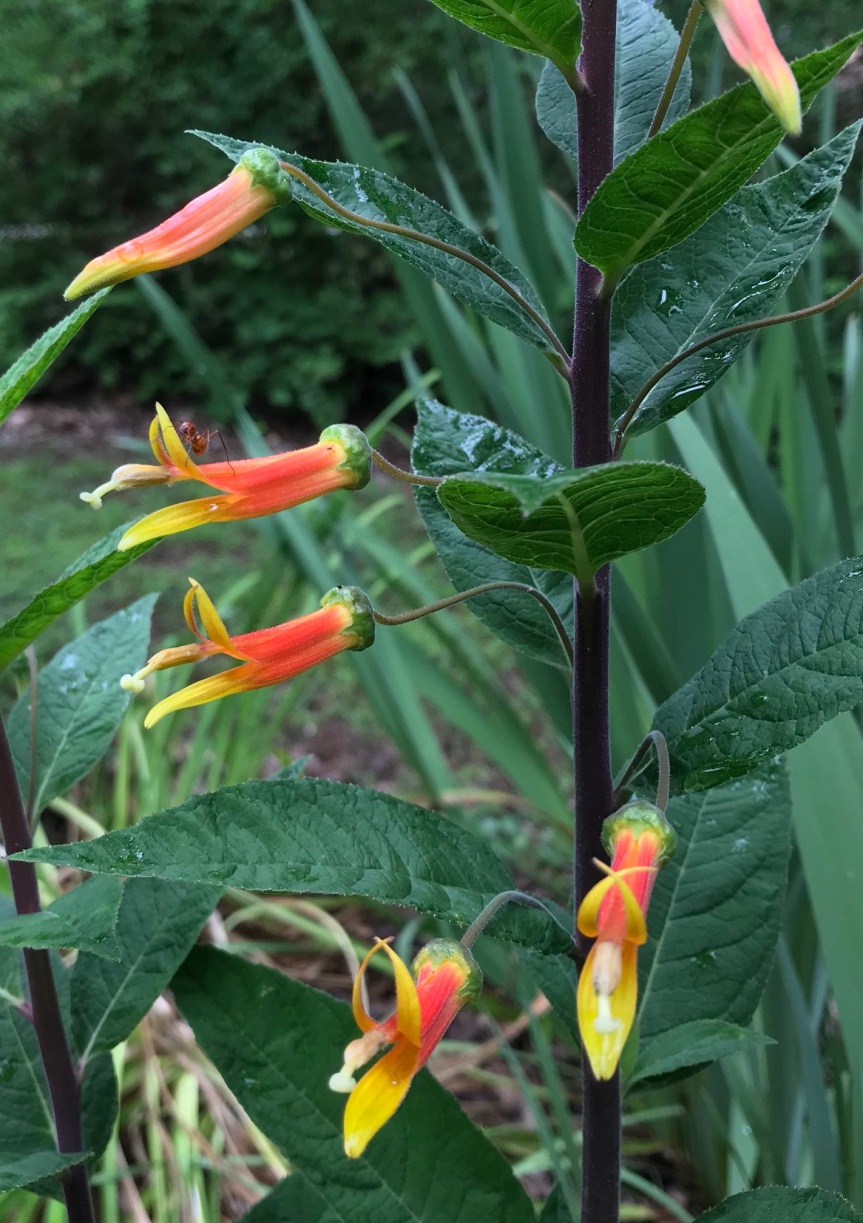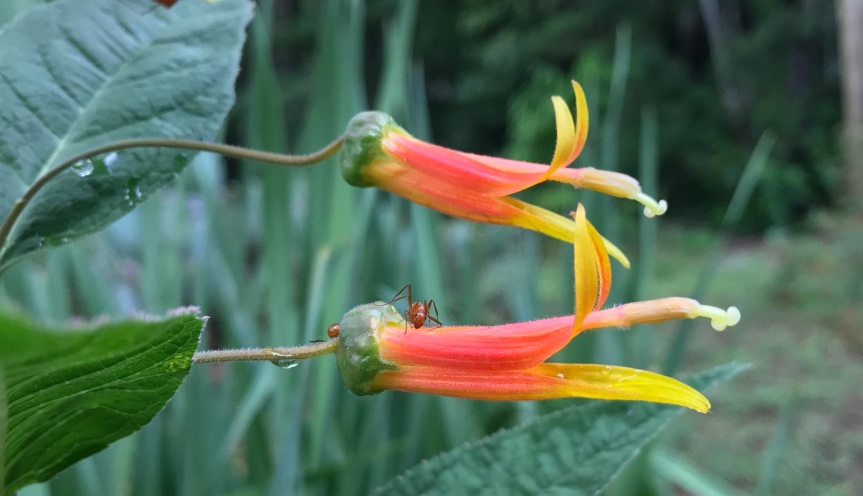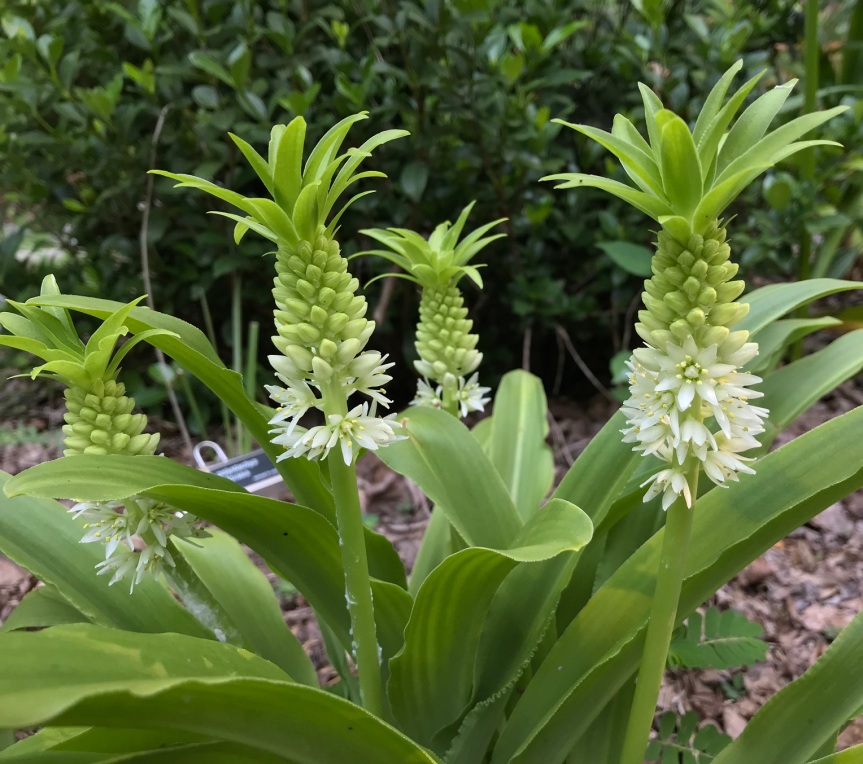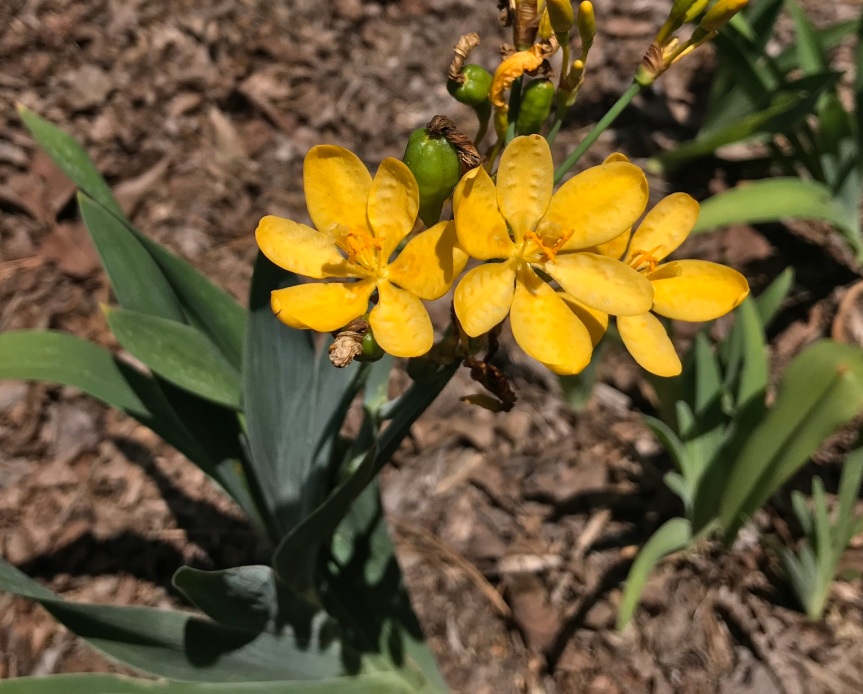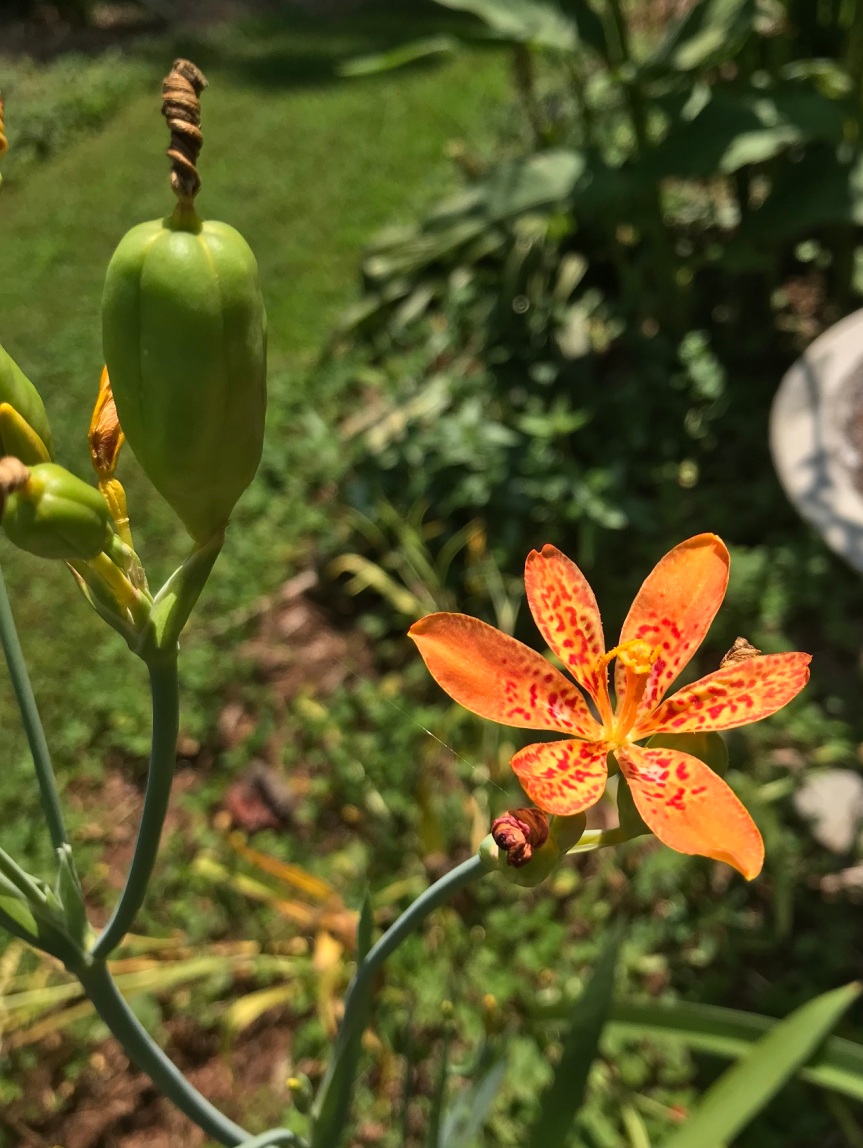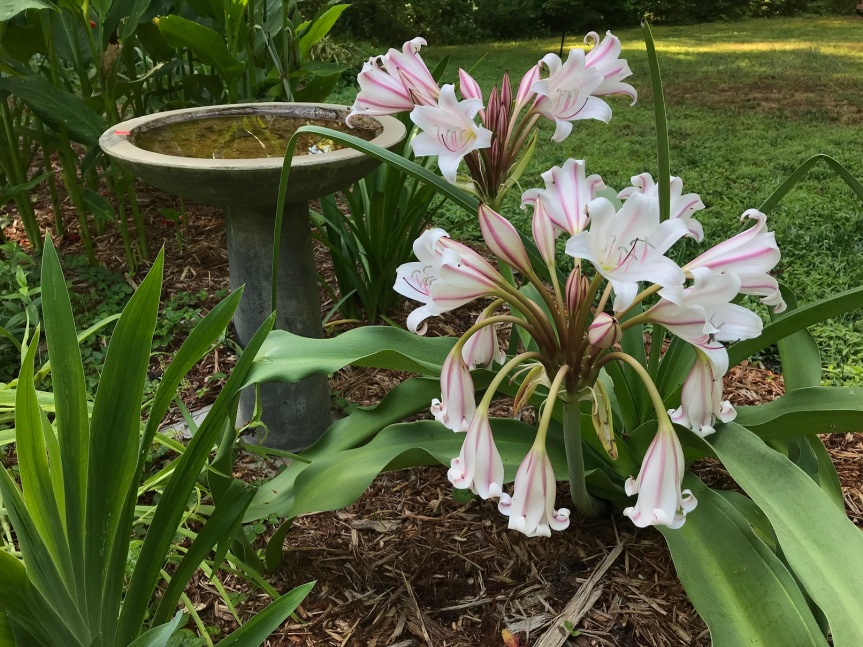We’re almost a week past the autumnal equinox, but it still feels like summer. Temperatures are running about ten degrees F above normal, and we haven’t had measurable rain since August. The soil is bone dry, and leaves are starting to dry up instead of changing color properly. There’s a chance of a shower tonight, but the forecast for the next week is more of the same: bright sun and mid 80s-90s F until Friday at least.
1. Epiphyllum oxypetalum (queen of the night)
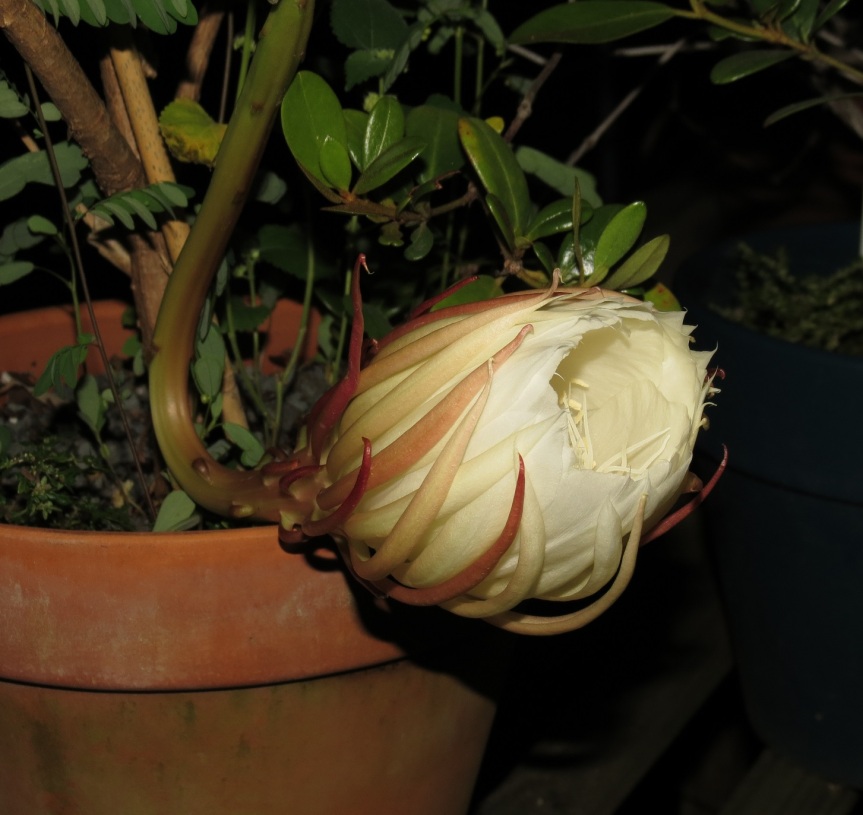
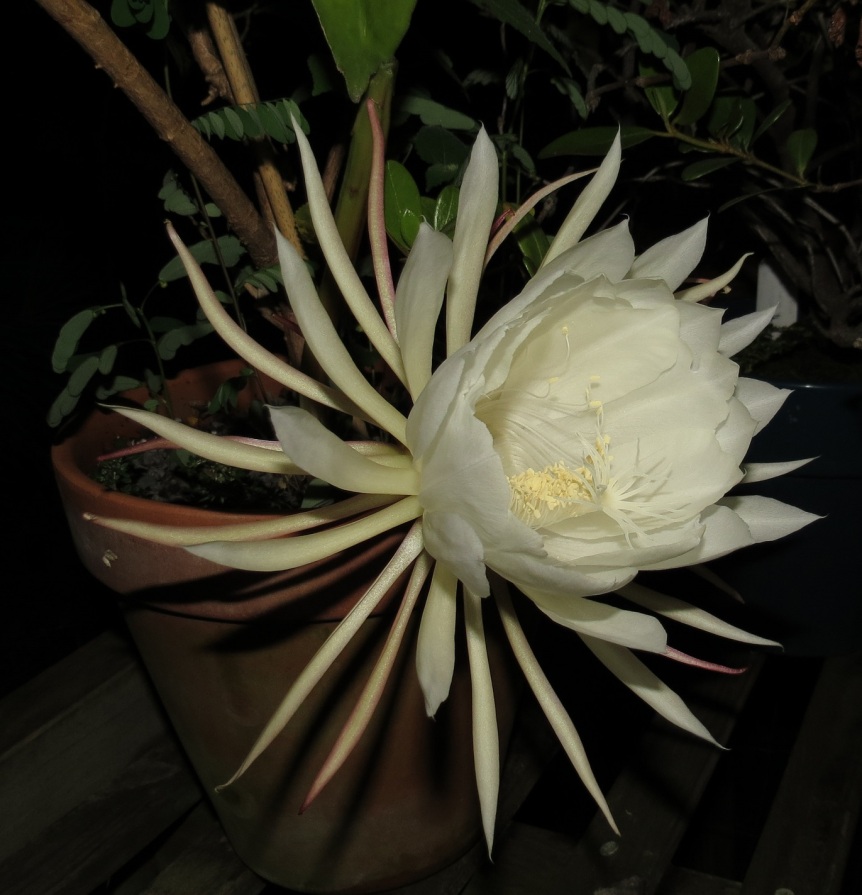
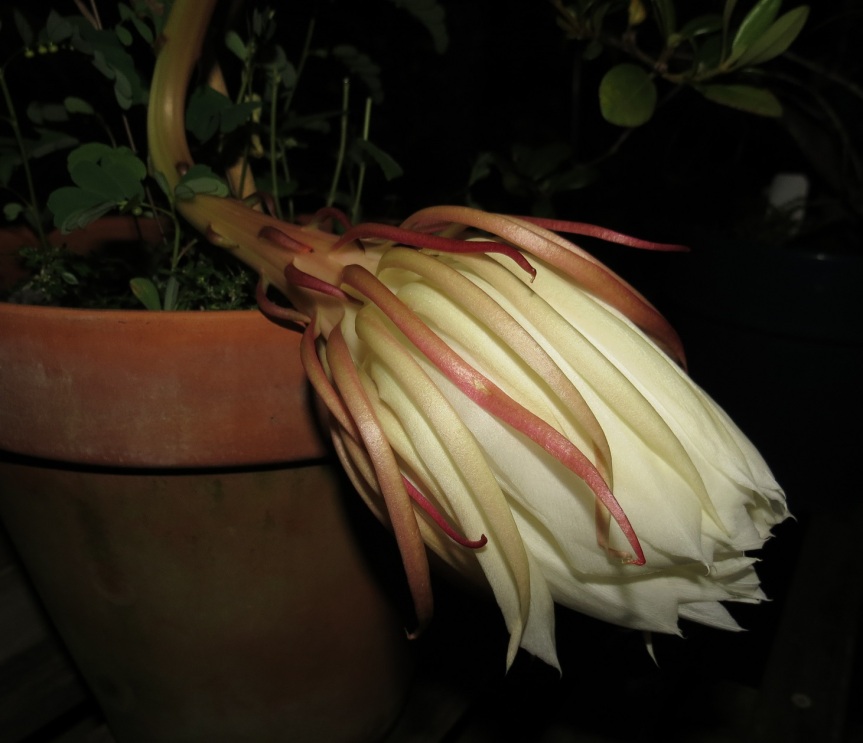
The large, fragrant flowers of E. oxypetalum, an epiphytic cactus from southern Mexico and Guatemala, open at night and fade by the next morning. I was pleased with this solitary bloom, but when I posted a picture on Facebook, a friend told me that his plant had more than 40 flowers!
2. Spiranthes odorata? (ladies’ tresses)
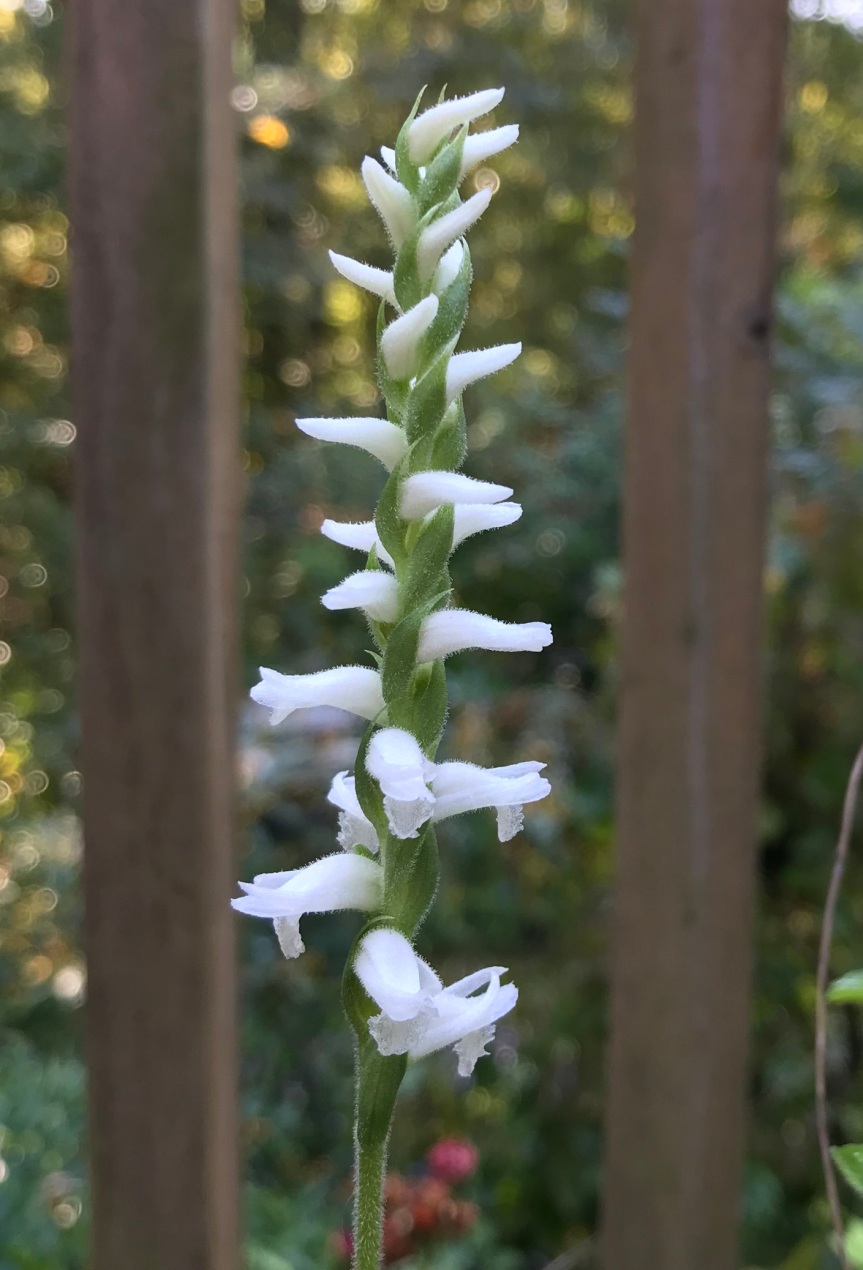
I think this is S. odorata, but I’m really not sure how to distinguish that species from S. cernua. Paul Martin Brown [1] says that there is considerable gene-flow between S. cernua and other Spiranthes species, so maybe a definite I.D. is impossible. Either way, I like the flowers. These little orchids don’t seem to be very long-lived, but they seed around and sprout in the pots of various bog plants. This one volunteered in a pot of Gentiana autumnalis.
3. Diospyros virginiana (American persimmon)
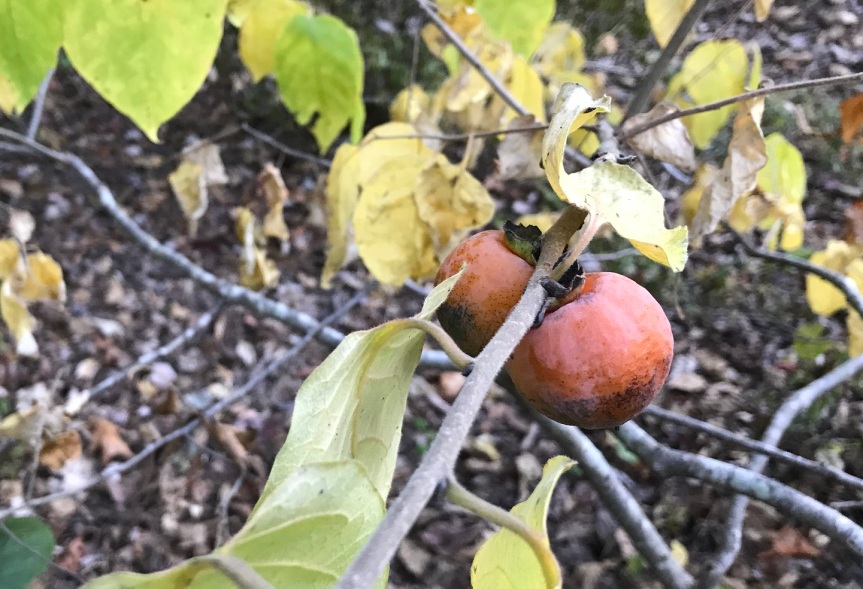
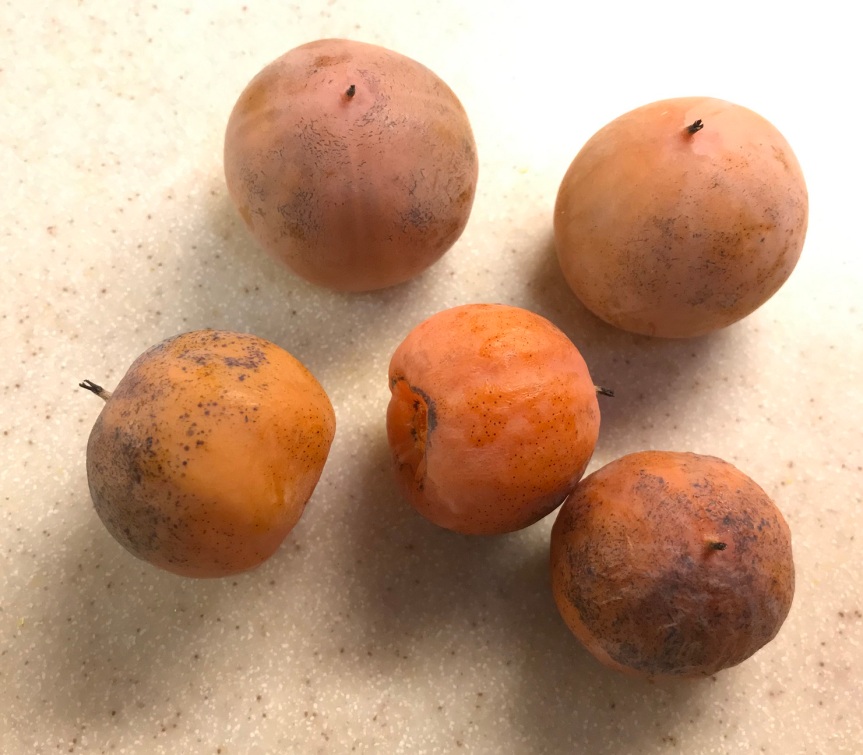
About nine years ago, I transplanted some root suckers from a large persimmon planted by my wife’s grandparents in Pennsylvania, probably in the 1940s. The transplants have finally given us some fruit, which is seedy but delicious. These are the first of the harvest, and we’ll be picking more as they become soft enough to eat. You do NOT want to sample an American persimmon that isn’t fully ripe. They are unbelievably astringent.
4. Hedychium coccineum ‘Applecourt’
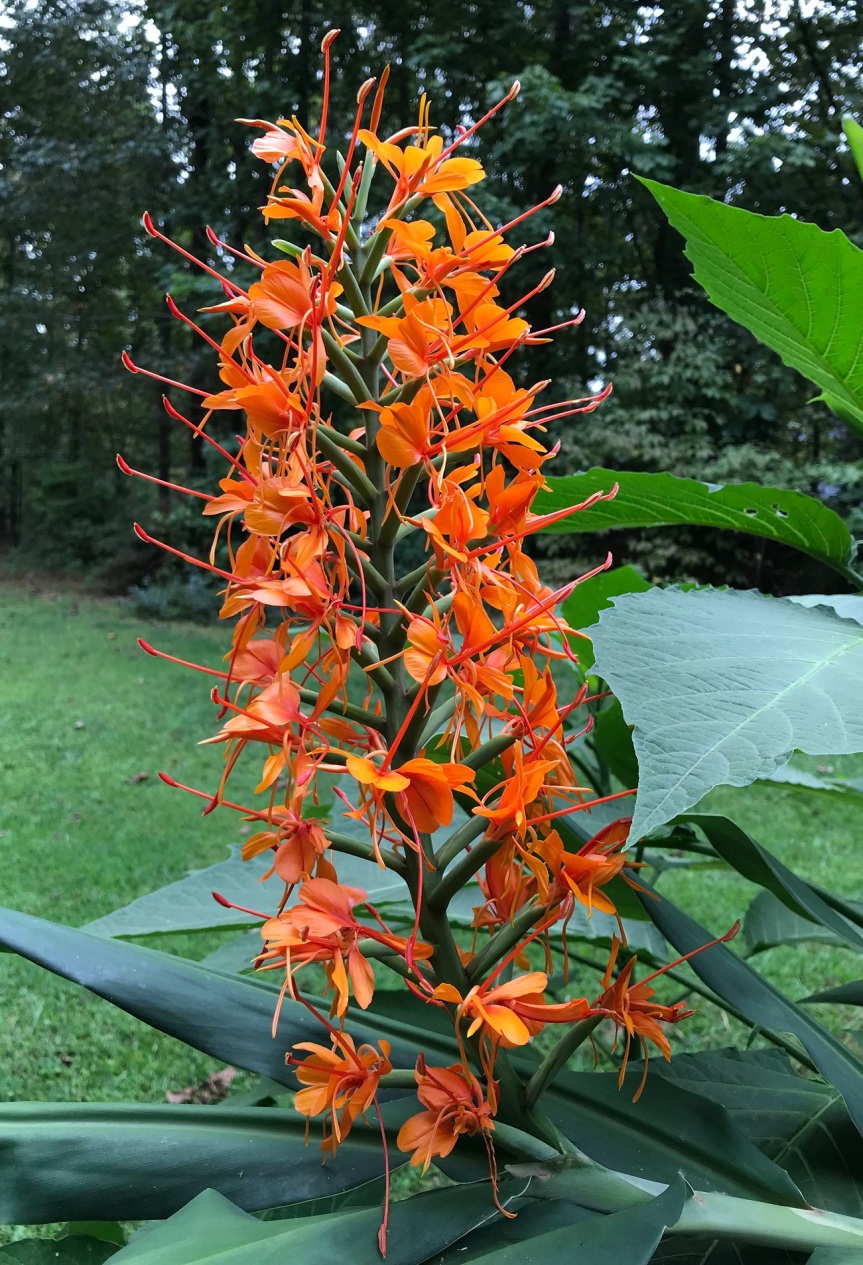
I thought I had already featured this hardy ornamental ginger, but I can’t find it in any past blog posts. The flowers lack the fragrance of H. coronarium, but I am a sucker for bright orange. In previous years, it has given me one flush of flowers at the tail end of summer, but this year the clump has finally grown large enough to flower on and off for months.
5. Colchicum ‘Innocence’
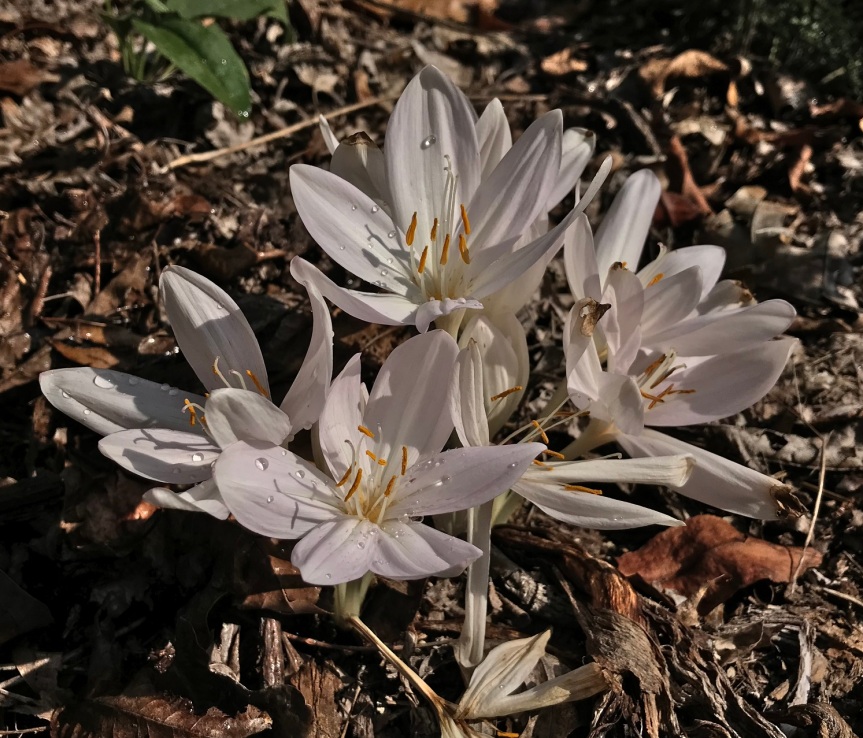
This is a white flowered clone of the sterile hybrid Colchicum byzantinus. My colchicums have struggled this year, probably due to the high temperatures and lack of rain in autumn thus far, and many have not yet poked their noses above the soil.
6. Salvia elegans (pineapple sage)
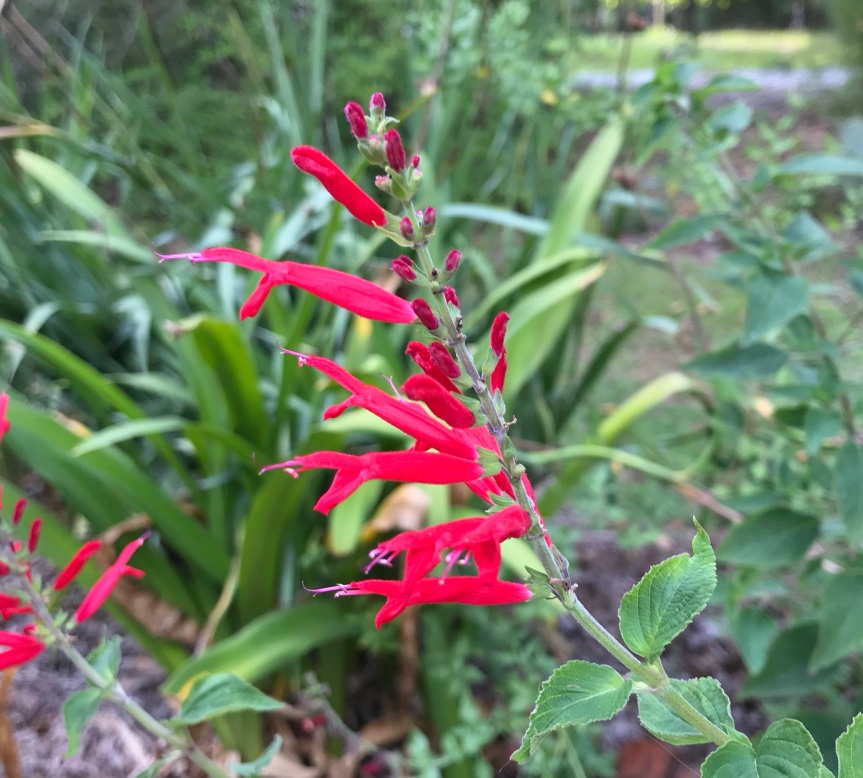
S. elegans is usually grown as an annual north of zone 8, but my plants survived last winter. Another sign that climate zones are shifting north, I suppose. This species gives me attractive foliage on a neat shrub-like form for most of the spring and summer, and then it flowers just in time for the autumn migration of the ruby-throated hummingbird.
The propagator is the host of Six on Saturday. Head over there to see his Six and find links to the blogs of other participants.
Reference
1. Brown, P.M. (2004). Wild Orchids of the Southeastern United States North of Peninsular Florida. University Press of Florida, Gainsville, Florida.

